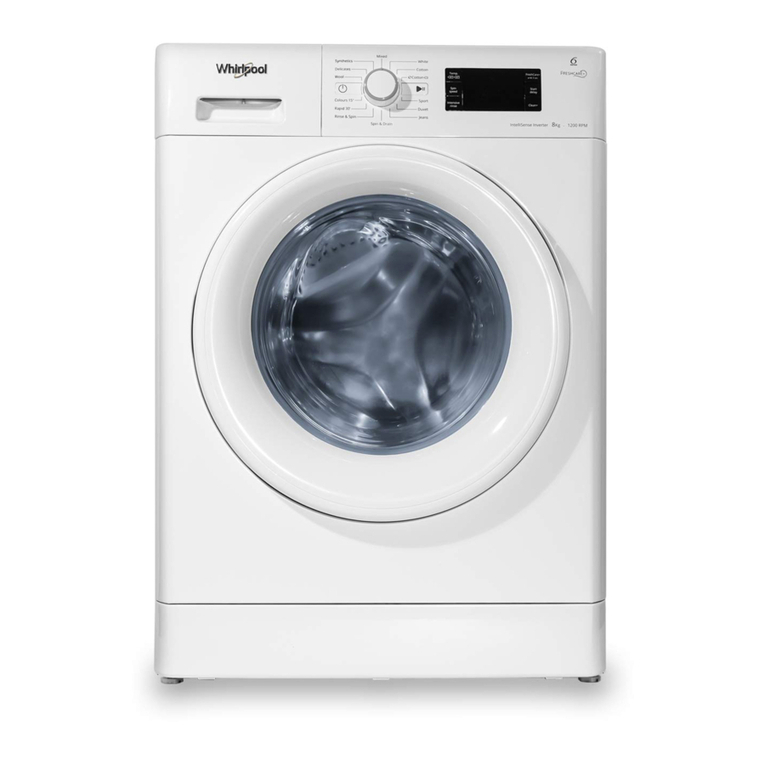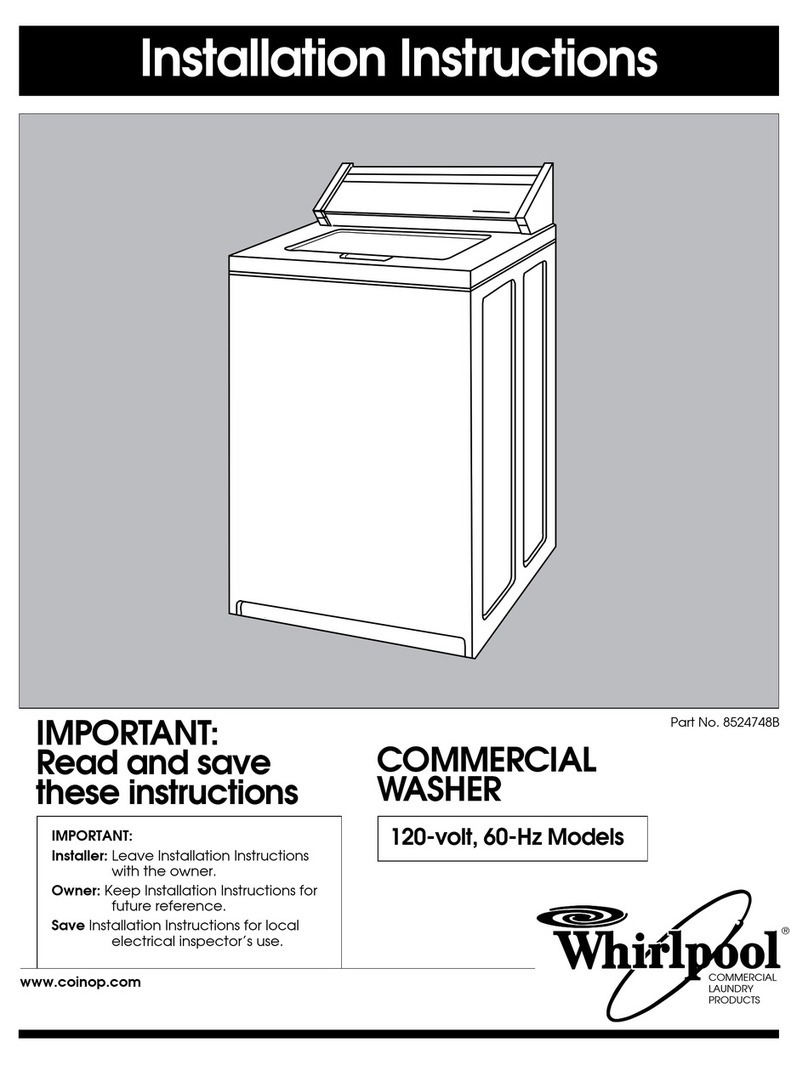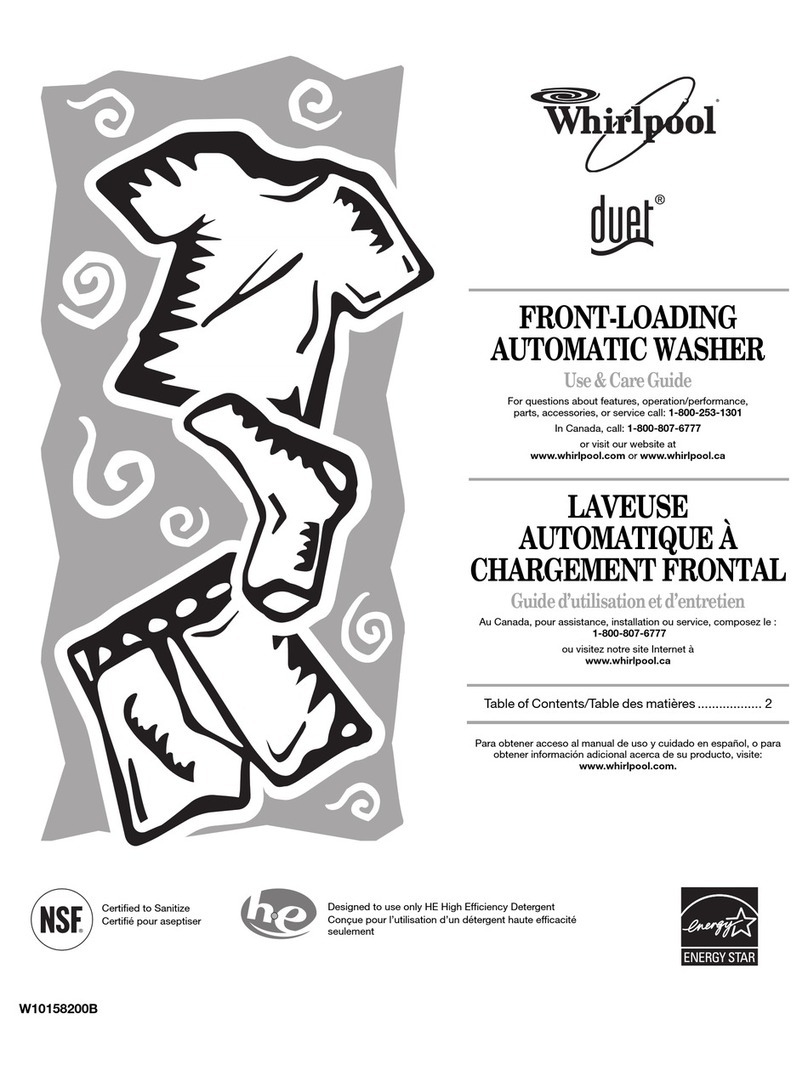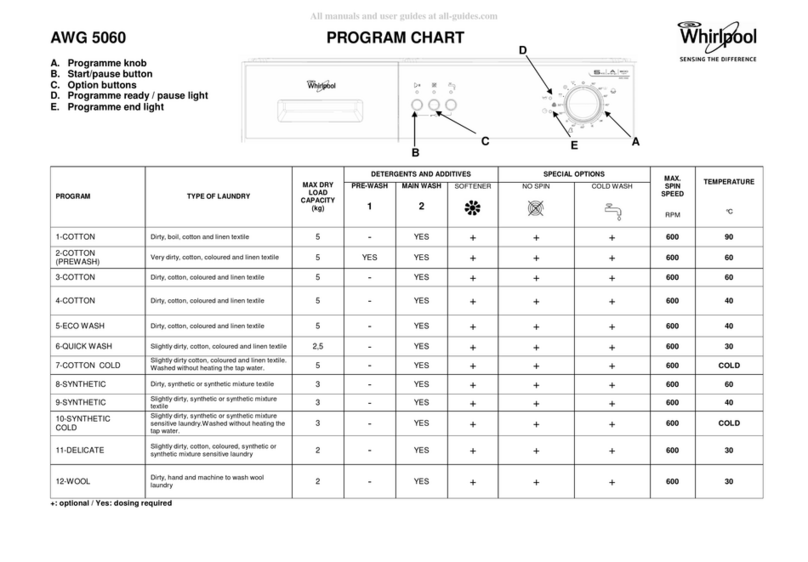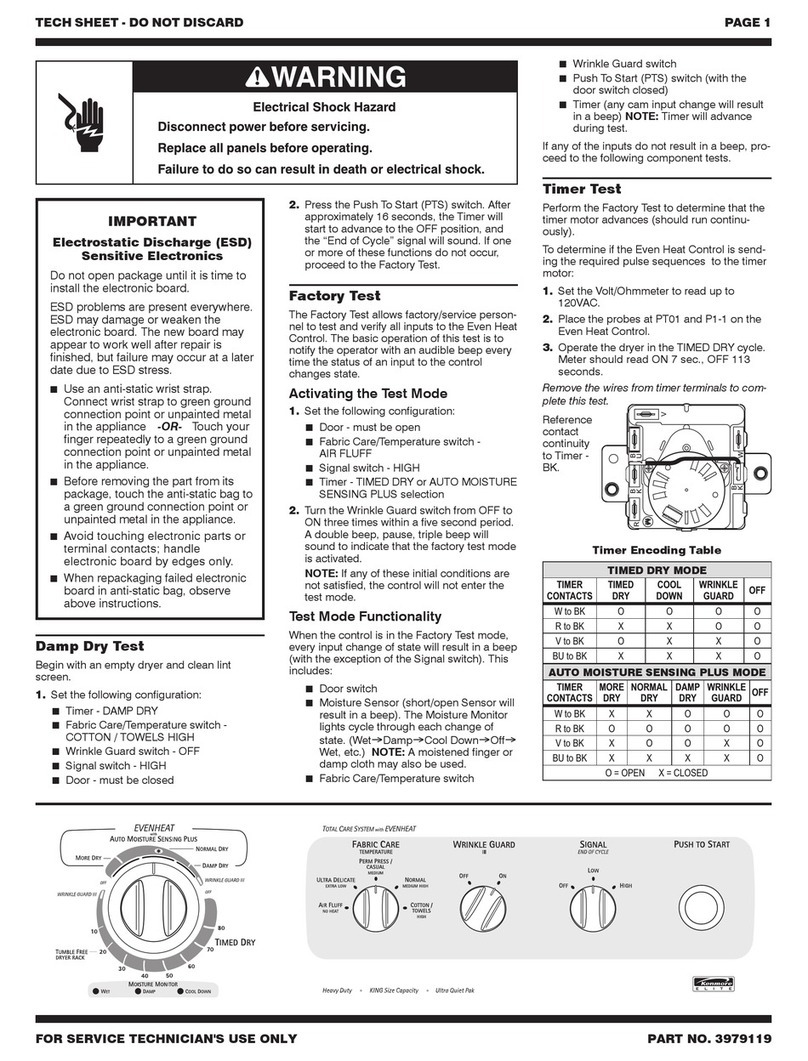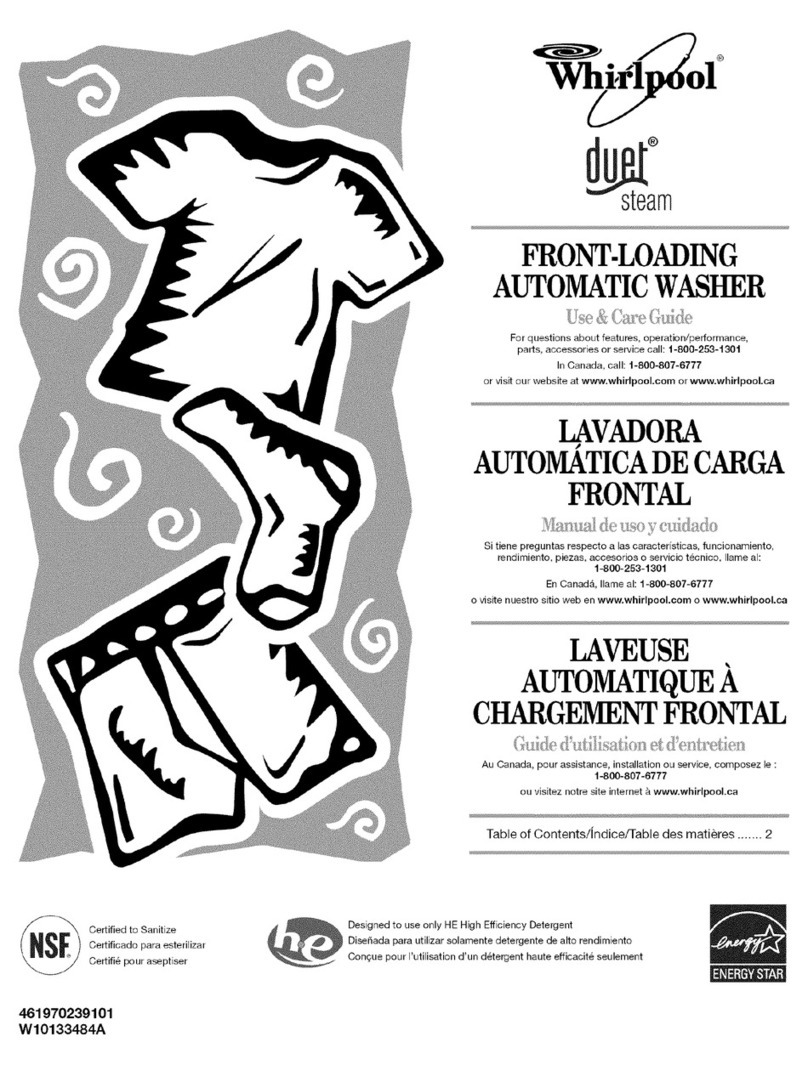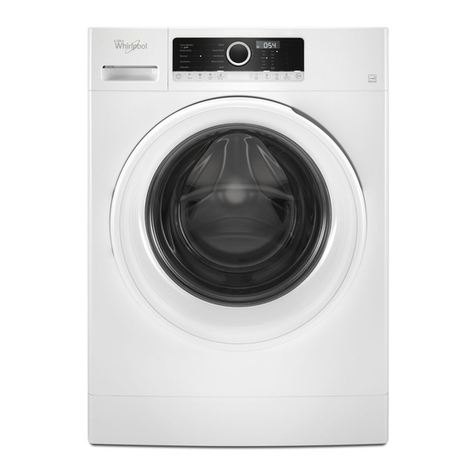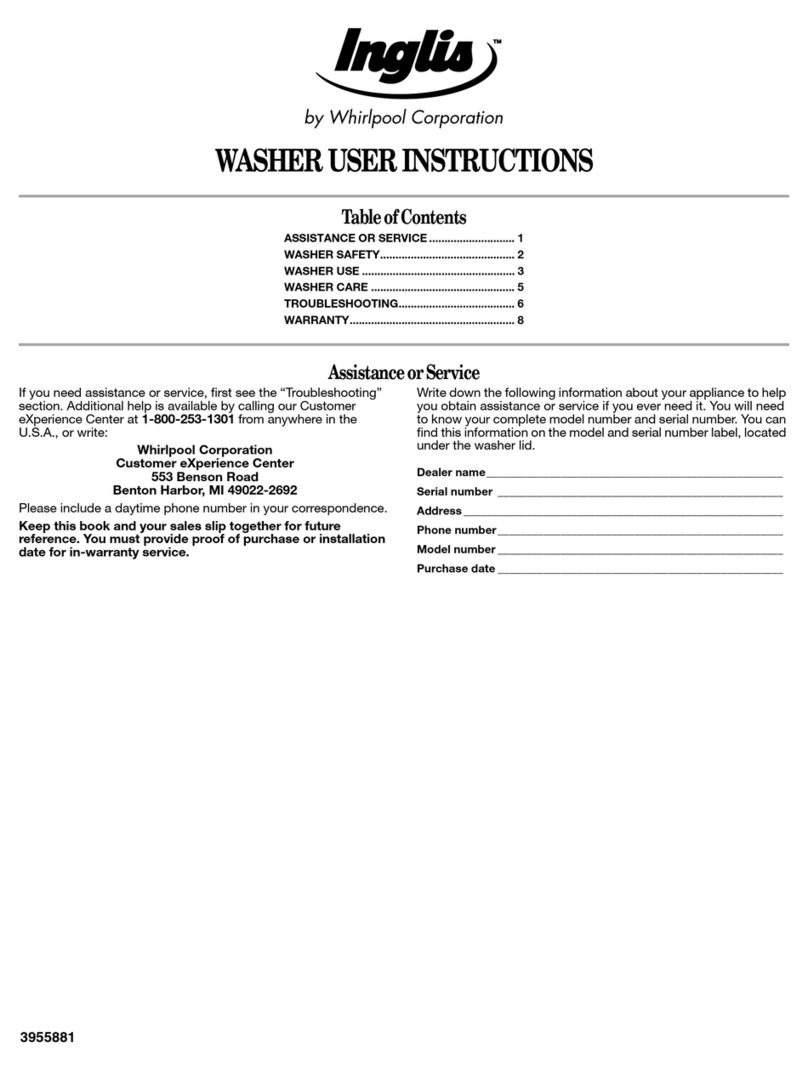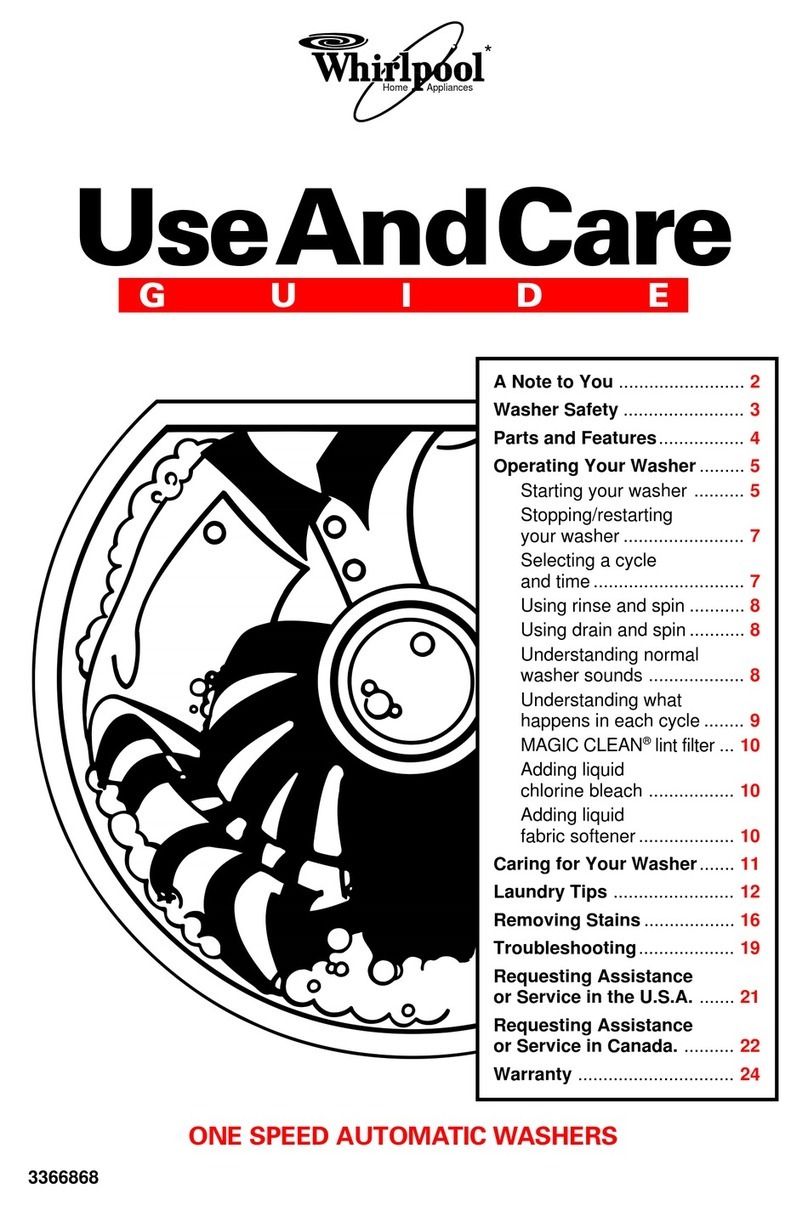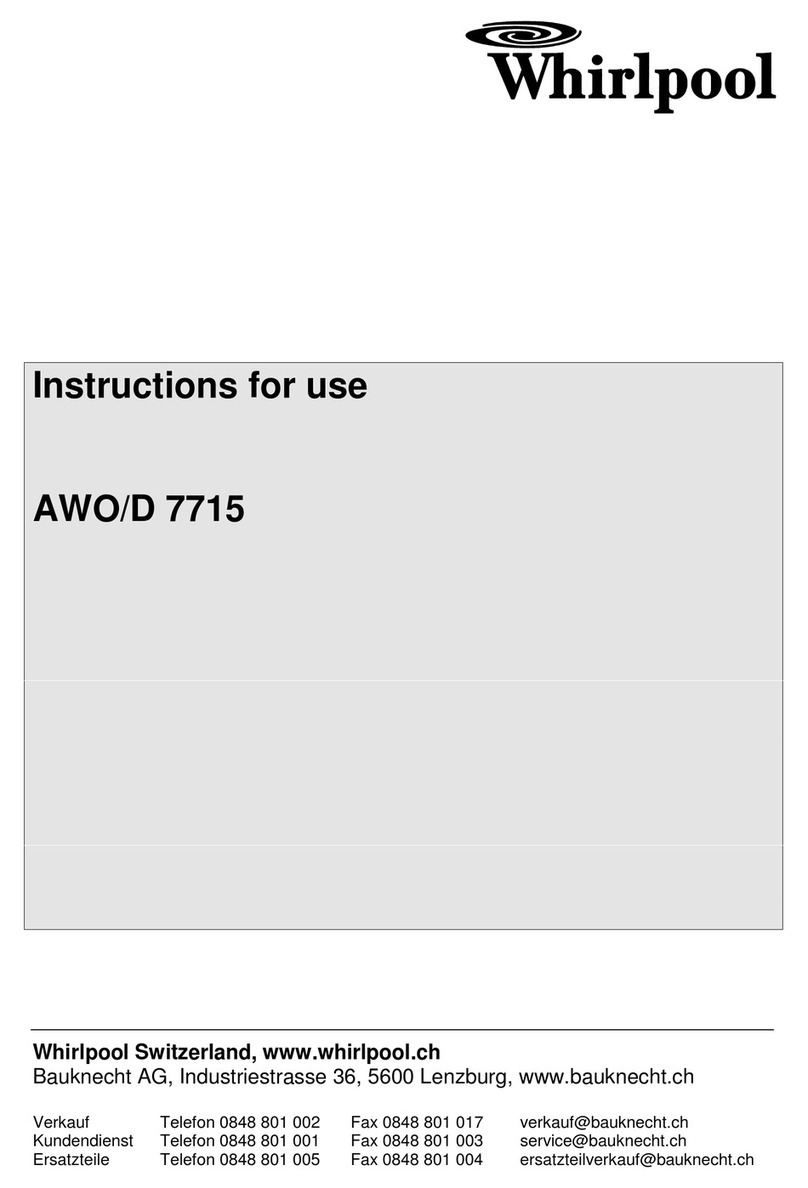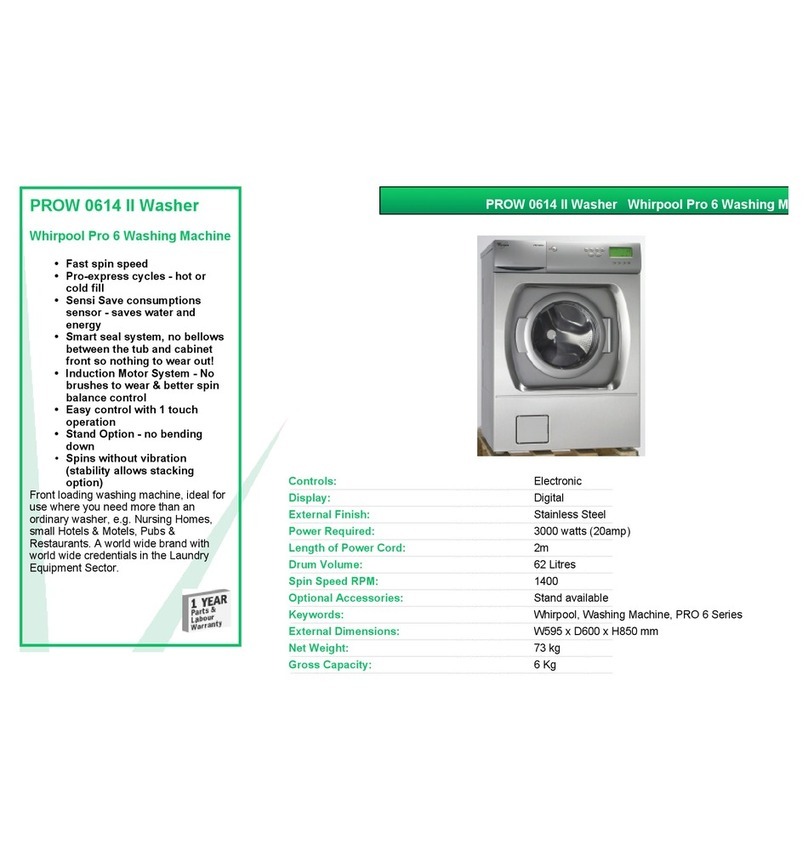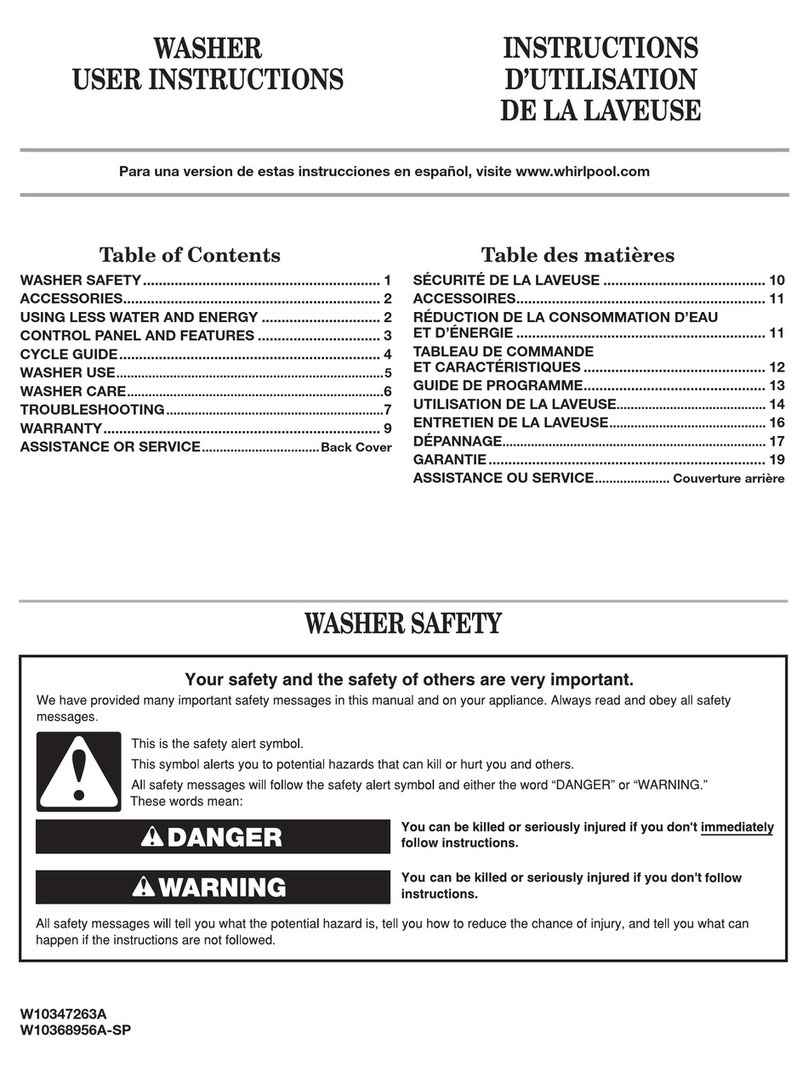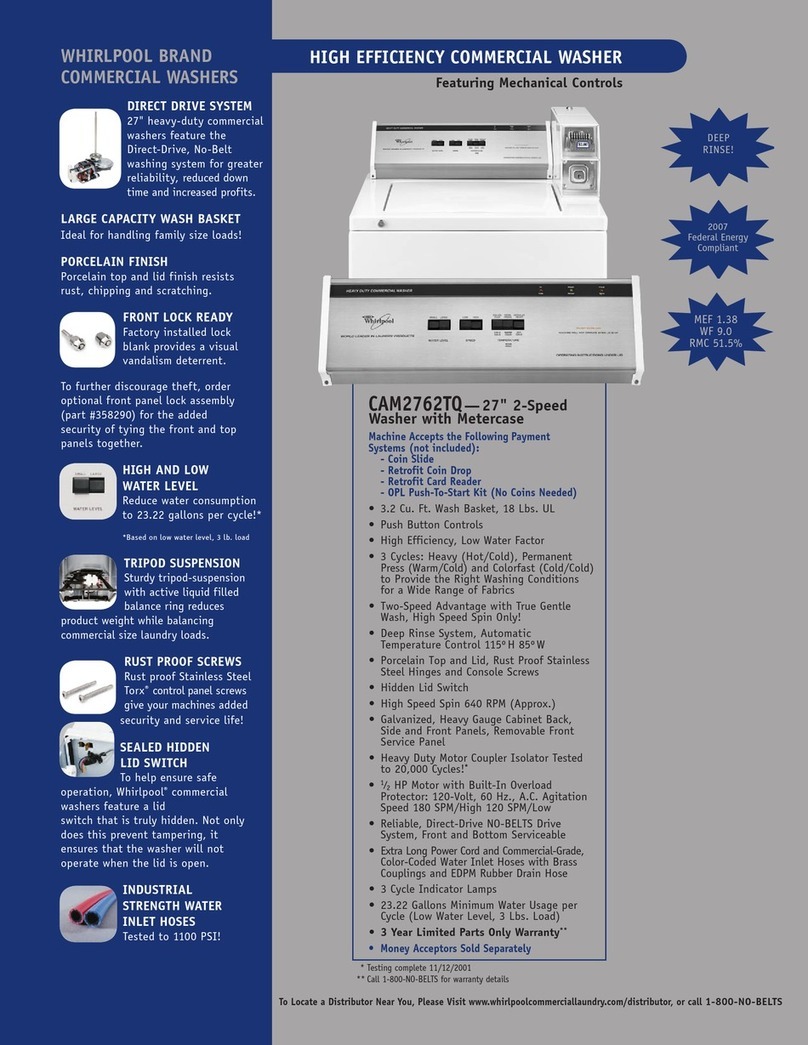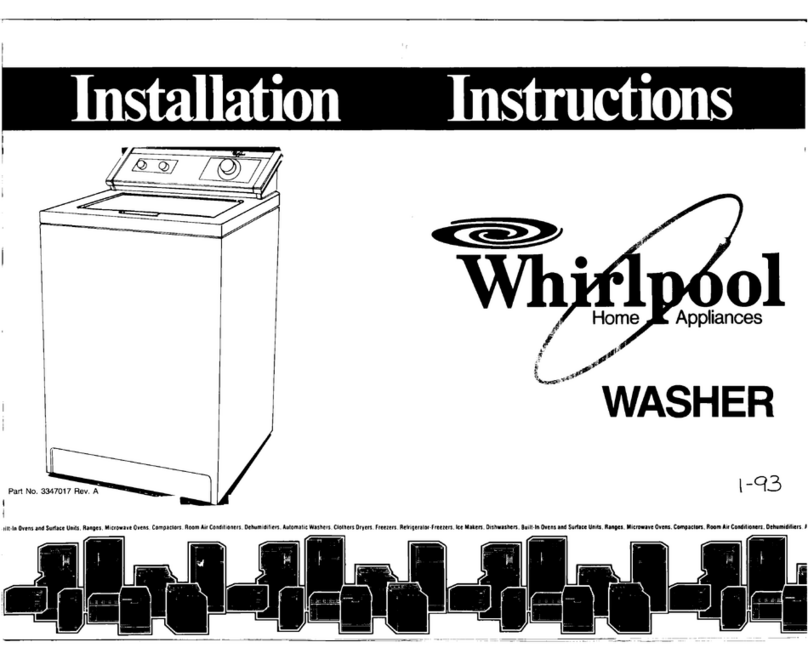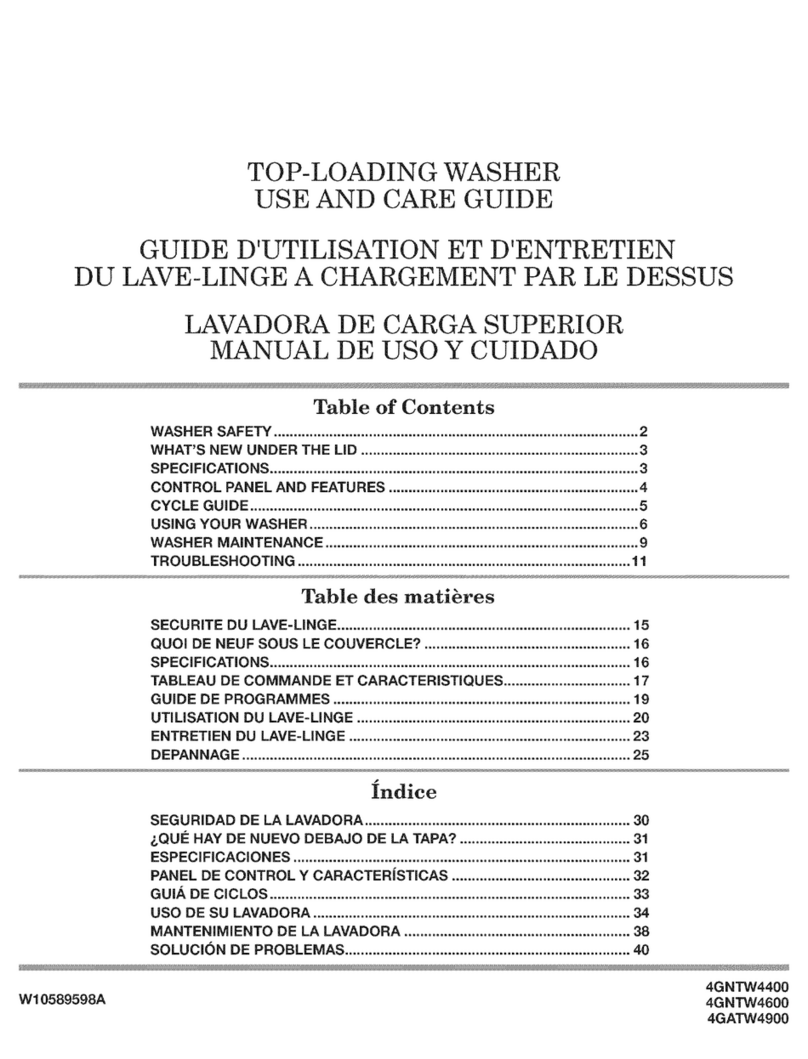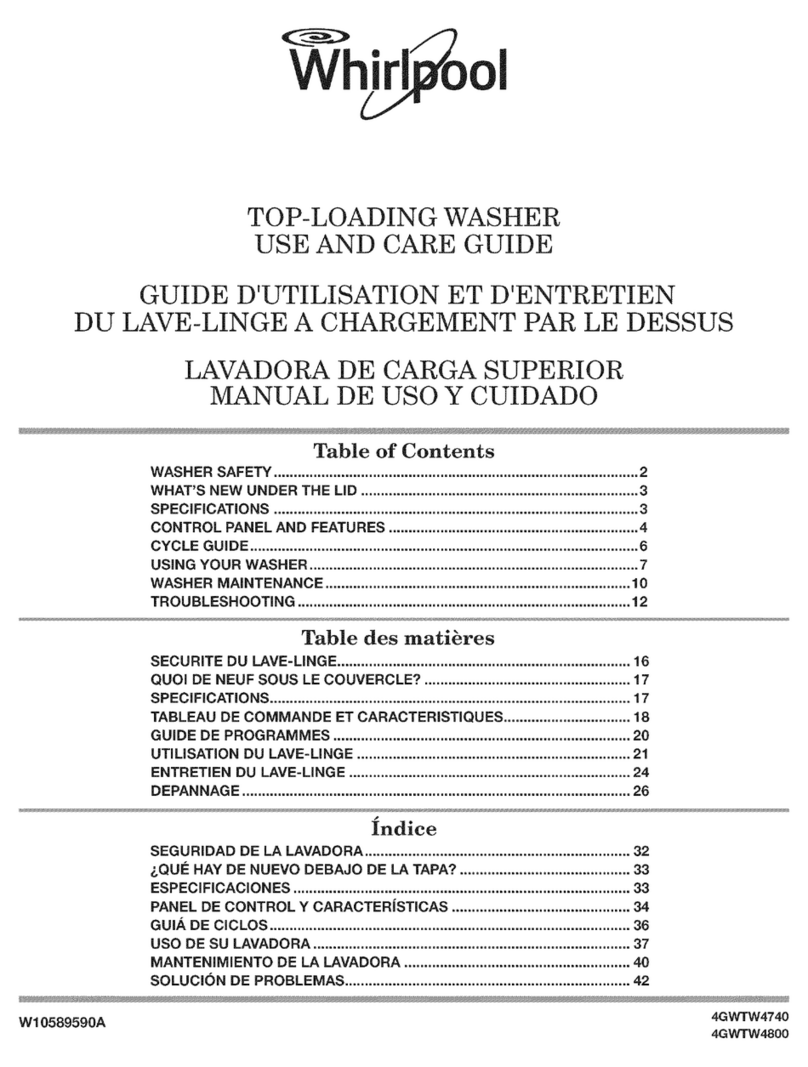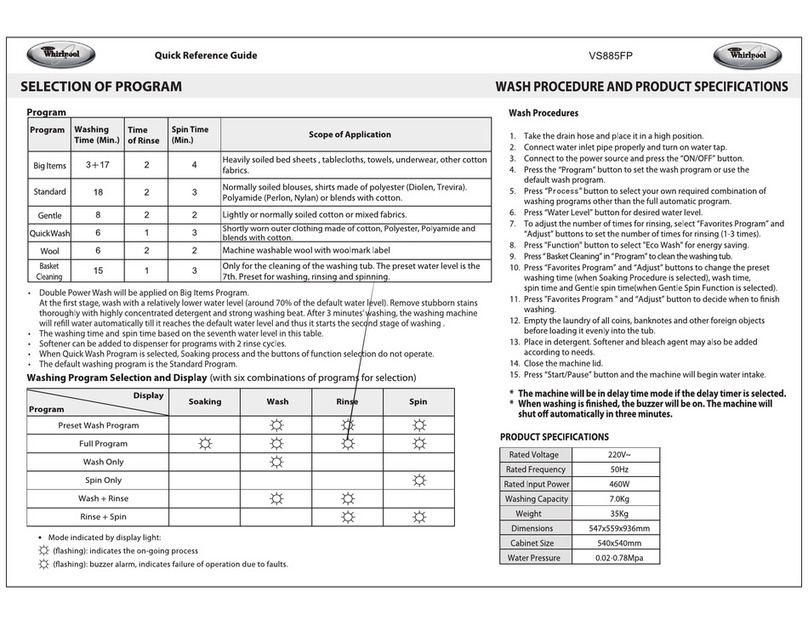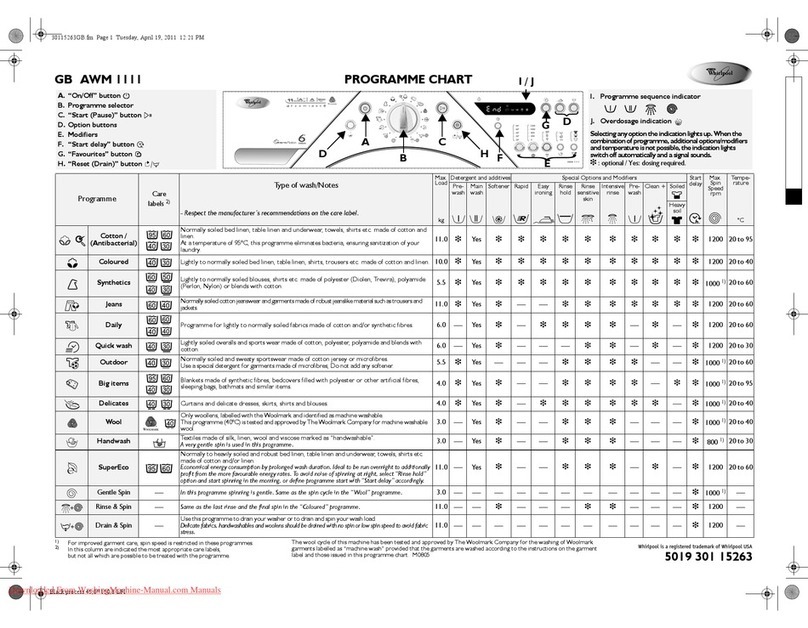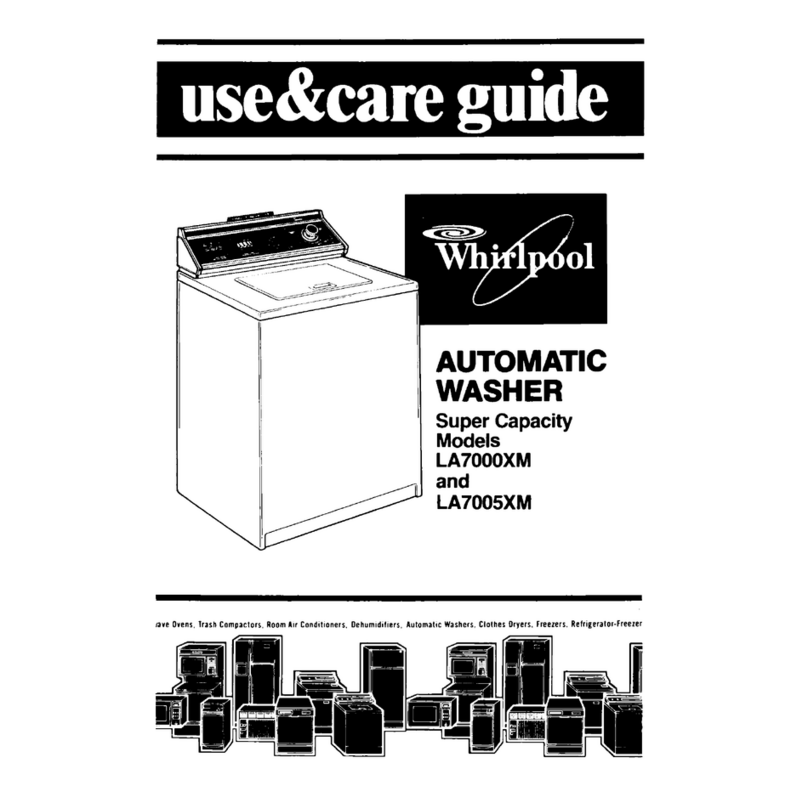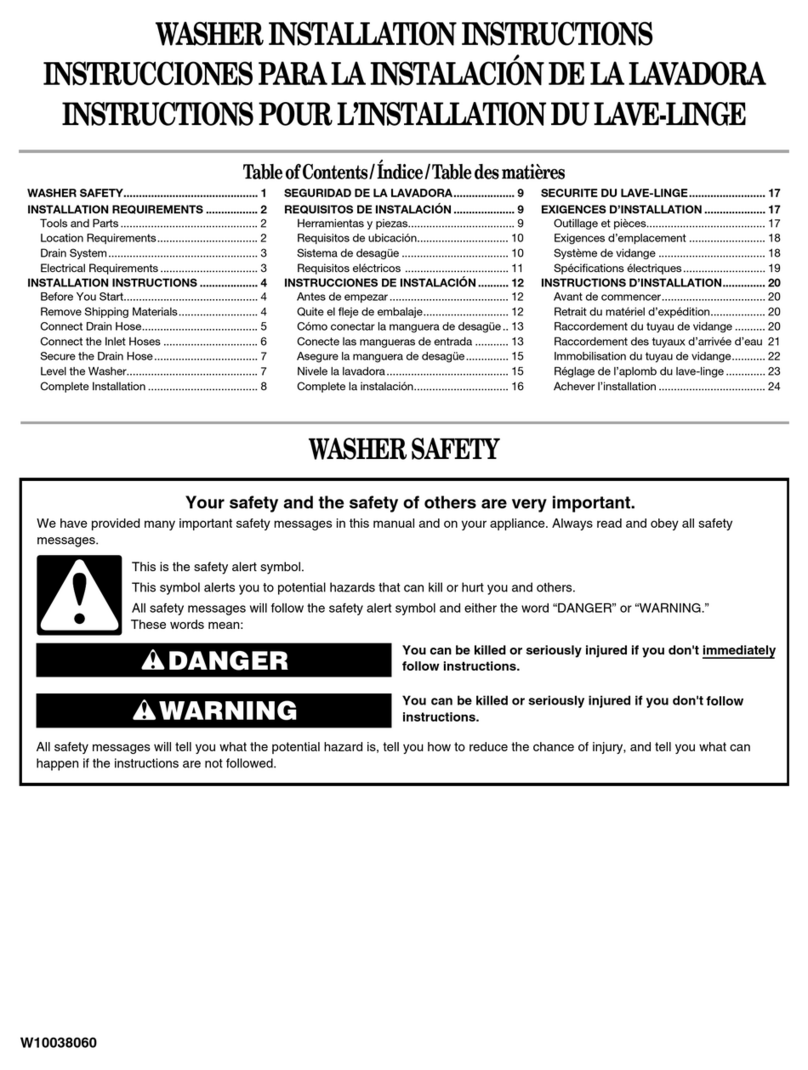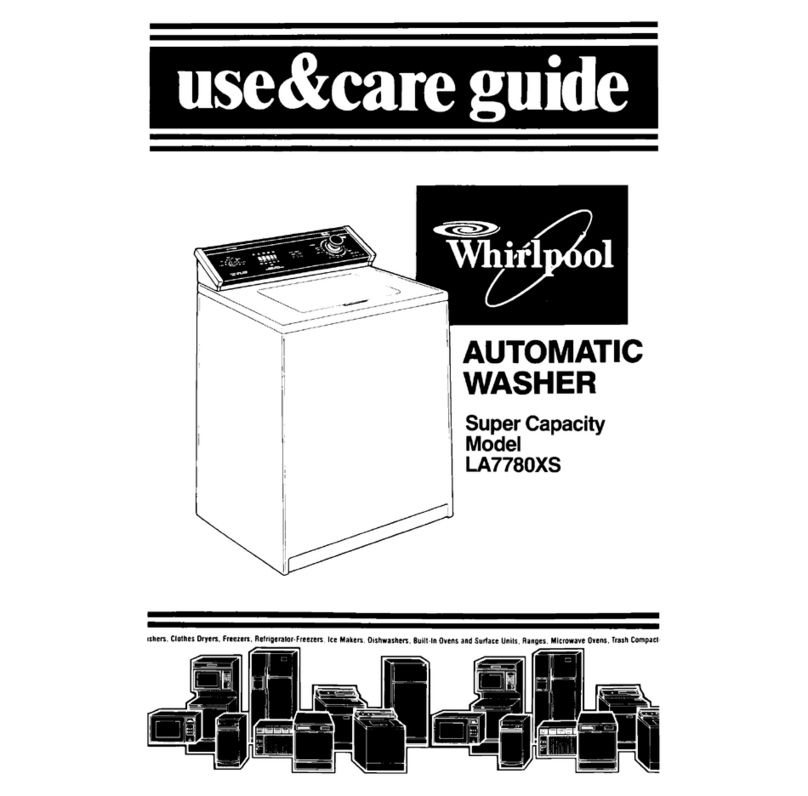104
PREPARATION OF THE WASHING
Sort the lau dry
1.Sort the laundr according to
Type of fabric / care label symbol
Cottons, mixed fibres, eas care/s nthetics,
wool, handwashed items.
Colour
Separate whites and coloured items. Wash new
coloured articles separatel .
Size
Wash items of different sizes in the same load to
improve washing efficienc and distribution in
the drum.
Fabric delicacy
Wash delicate articles separatel : Use a special
programme for Pure New Wool , curtains and
other delicates. Alwa s remove curtain glides or
wash curtains with the glides inside a cotton bag.
Use the special programme for handwash fabrics.
Wash small articles (e.g. n lon stockings, belts etc.)
and articles with hooks (e.g. bras) in special cotton
bags for washing machines or in zipped pillow cases.
2.Empty pockets
Coins, safet pins and similar items can damage
our laundr and the appliance drum and tub.
3.Faste ers
Close zips and fasten buttons or hooks; loose
belts or ribbons should be tied together.
Stai removal
Blood, milk, egg and other organic substances
are generall removed b the enz me phase of
the programme.
To remove red wine, coffee, tea, grass and fruit
stains etc. add a stain removing agent in
detergent dispenser or chlorine bleach in
compartment (depending on model).
Particularl stubborn stains can be treated with
stain remover before the wash.
Dyei g a d Bleachi g
Commerciall available products usuall consist of
a d e colour, fixing agent and salt. Pour the d e
colour, the fixing agent and then the salt directl
into the empt drum. Fill in the laundr onl
afterwards.
Use exclusivel d es and bleaches recommended
for washing machines.
Follow the Manufacturers instructions.
Plastic and rubber components of the machine
can be stained b d es.
Loadi g the lau dry
1.Open the door.
2.Load the articles one at a time loosel into the
drum, without overfilling. Follow loads
recommended in the programme chart.
Overloading will result in unsatisfactor washing
results and creased laundr .
3.Close the door.
DETERGENT AND ADDITIVES
Choice of deterge t a d additives
The t pe of detergent depends on:
t pe of fabric (cottons, eas care/s nthetics,
delicate items, wool).
Note: use onl specific detergents for wool.
colour;
wash temperature;
degree and t pe of soiling.
Notes:
Whitish residues on dark fabrics are caused b
insoluble detergent components used in modern
phosphate-free powder detergents.
If this occurs, shake or brush out the fabric or use
liquid detergents.
Keep detergents and additives in a dr place and
out of reach of children.
Use onl detergents and additives specificall
produced for domestic washing machines.
If ou use descaling agents, d es or bleaches,
make sure the are suitable for washing machine
use. Descaler could contain components that can
attack parts of our washing machine.
Do not use solvents in the machine
(e.g. turpentine, benzine, etc.).
Do not machine wash fabrics that have been
treated with solvents or flammable liquids.
Dosage
Follow the instructions on the detergent pack in
relation to:
the degree and t pe of soiling;
the size of the load;
full load: follow the detergent manufacturers
instructions;
half load: 3/4 of the normal amount;
minimum load (about 1 kg): 1/2 the amount
used for full load;
Downloaded From WashingMachine-Manual.com Manuals
